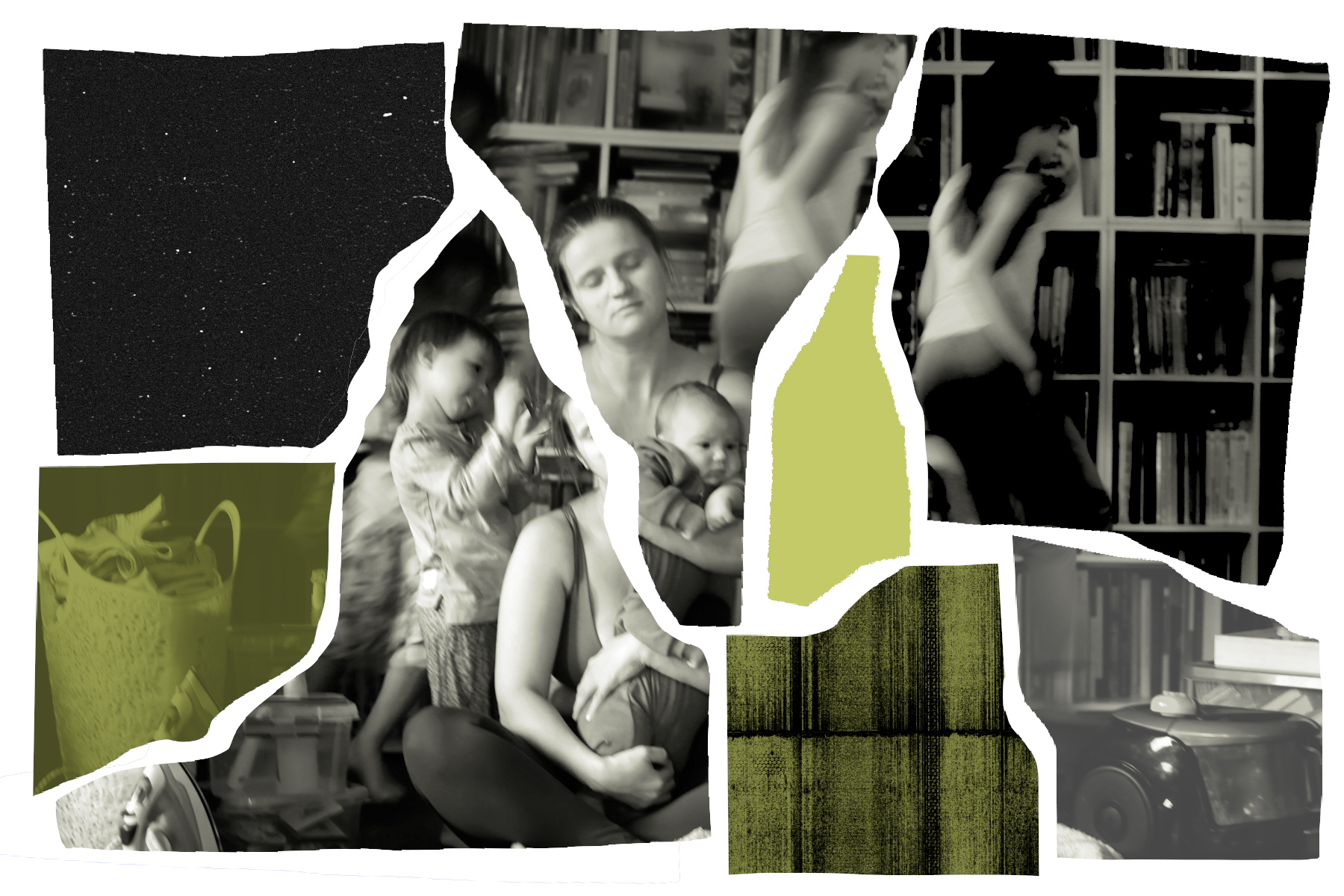There was a point last month when Grace Thee was hosting two au pairs in her Florida home. One was Valentina, the Colombian au pair who helps care for Thee’s four young children. The other was an au pair who had been kicked out by her host family, with nowhere to go.
The precarity of it all struck Thee — how in a system like this, “the host family has all the cards,” she said. Au pairs, all of them young people between the ages of 18 and 26 and more than 90 percent women, come to the United States under a visa program that places them with a host family for one to two years. The family provides room and board; the au pairs provide child care. But their experiences once they arrive are entirely dependent on the benevolence of their host families in a program that has routinely put the family’s needs above the au pairs’.
For some hosts, “it’s kind of the mentality of treating them like a servant,” Thee said. Au pairs “are part of a very vulnerable population, and I think that depending on the family, you can really take advantage of them because the families have all of the power.”
Pressure has been mounting for the State Department, which administers the program, to do something to address the inequities as domestic worker protections across the country have expanded and the child care crisis has deepened. For many American families, child care surpasses the cost of rent or a mortgage every month. It’s only gotten worse since the pandemic.
But any change feels fraught. Au pairs agree that the program underpays them, but would new labor protections turn them into child care workers and strip away the cultural exchange component? Many families also agree au pairs could be paid more, but would that lock them out of their only viable child care option? No one can quite figure out the balance.

For families, the cultural exchange has been more of a bonus. Particularly if they have multiple young children, like the Thees who have a 4-year-old, 2-year-old twins and an infant, the program offers them child care at a fraction of what it would cost in any other setting. In Boca Raton, it would cost the Thees about $60,000 a year on average for their four kids — the au pair costs them about $22,000.
For 38 years, the State Department has insisted the au pair program is a cultural exchange where young people can come to the United States, improve their English and use their earnings to travel the country, soaking up some star-spangled culture. The program works through the J-1, or exchange visitor, visa. But as far back as 1990, the Government Accountability Office, in auditing the J visa programs, determined that “au pair programs are essentially child care work programs that do not correlate with the qualifying categories mentioned in the J-visa statute.” Still, Congress has not proposed any additional reform that would protect au pairs as workers.
And so in October, the State Department finally announced it was planning to overhaul the au pair program for the first time since 2009, introducing a new pay structure that would more closely align wages with state and local minimums, but would continue to allow families to deduct some of those wages to cover room, board and meals.
More than 10,000 comments flooded the State Department through the end of January — an unprecedented response, according to a bipartisan group of senators who wrote in along with former and current au pairs, host families, workers’ rights groups, and the agencies that administer the program.
Most of them shared one prevailing thought: They didn’t like the proposal.
The key change the State Department is proposing is a four-tiered wage formula that many say is incredibly difficult for host families to decipher. Thee, the mom from Boca Raton, said she can barely make sense of it. Currently, au pairs earn a minimum of $195.75 a week, an amount that hasn’t changed in 15 years. It works out to $4.35 an hour for 45 hours. Under the proposal, that could rise to as much as $720 a week, depending on cost of living and minimum wage laws in the city where the au pair works. The most families can currently deduct from those wages for room, board and meals is $130.54 — that amount would remain the same.
Currently, au pairs also can’t work more than 45 hours a week, with no overtime. The new rules reduce the work week to 40 hours, with overtime pay for anything over that amount, and schedules must be set ahead of time. Any changes would require signoff from the au pair’s sponsor agency; 14 agencies are authorized by the State Department to run the program.
Under the proposal, costs for many families could more than double, creating an exodus from the program and diminishing the opportunities for au pairs to come to the United States. Worker advocates also worry the new rules have no teeth: The program is the only J-1 visa program not overseen by the Department of Labor, the agency that has the authority and expertise to enforce the new rules.
“The State Department is trying to have it both ways, where they treat the au pairs as employees, but also in other ways not treat them as employees,” said Alex Nowrasteh, the vice president for economic and social policy studies at the Cato Institute, a libertarian think tank. Nowrasteh is also a host parent who turned to the au pair program because it was the only reliable child care option he and his wife could find during the pandemic.
A Department of State spokesperson told The 19th that the department’s “ultimate goal is to maintain a mutually beneficial cultural exchange, increase protections for au pairs, and ensure affordability for American families nationwide.” The department will consider all the public comments before coming to a determination, which likely won’t be finalized this year.
For now, au pairs, host families and the agencies are left to wonder if the new regulations address anyone’s concerns and what the best way forward could be.
The intensity of the child care burden further complicates the issue. Child care is what allows many American parents to work and, in turn, provide for their children. But because the United States does not treat child care like a public good as it does K-12 education, the system has become unstable and unaffordable. It’s a major stressor for families and especially moms.
Thee said there’s no doubt au pairs need to be paid more, “and if it’s cost prohibitive for some families, then hopefully some families will rise up and vote for politicians and policies that support women and families,” she said. “You’re having this program almost subsidize the lack of affordable child care in the U.S. If you want to be pissed about it, be pissed at politicians.”
The increase in wages the State Department has proposed, as well as regulations that protect au pairs’ schedules, are part of an attempt to address a well-known history of abuse by giving au pairs more autonomy.
A 2018 report on au pair working conditions, compiled by migrant and worker advocacy organizations through interviews, au pair reviews and the authors’ own direct work with au pairs, found that wage theft, coercion, sexual harassment and retaliation are common in the system. It also found 25 potential cases of human trafficking from 2014 to 2017. “Many au pairs are treated as underpaid domestic workers — or worse,” the report found.
Investigations in The Washington Post and Politico Magazine detail persistent wage theft, telling stories of au pairs who were often required to work long hours performing duties outside the parameters of the program. On TikTok, videos of “au pair horror stories” abound.
Rocío Ávila, a senior lawyer with the National Domestic Workers Alliance and one of the co-authors of the 2018 report, questions whether the State Department will even be able to enforce new labor regulations.
“It is not in the business of raising standards for workers — that is the purview of the Department of Labor,” Ávila said. “How are we going to know what they’re going to do to actually ensure that there’s oversight?”
Currently, the agencies that administer the program handle much of the implementation and regulation, and the State Department also investigates incident reports. But according to a 2012 State Department Inspector General report, sponsors are rarely sanctioned after incidents are investigated, and when they are, it’s not likely to result in “meaningful consequences.”
Once au pairs are matched with a host family, they report that they have few resources to turn to. If something goes wrong, au pairs must rematch with another family within two weeks or risk losing their visas and getting sent home. It’s the kind of dynamic that breeds silence.
Elina Faizullina, a 23-year-old Russian au pair who was working in Connecticut, was in the midst of the rematch process in February after her host family realized, several months into her stay, that they didn’t in fact need an au pair.
Though she had a largely positive experience with them, she said having to find a new match created a lot of uncertainty about her future. She stayed at a friend’s house as she tried to interview with other prospective families, and because she had little money saved, she felt additional pressure to find new placement quickly. Faizullina, who worked as a teacher in Russia, had sought out the program as a chance to continue working with kids, but also travel. The program was one of the only opportunities she had to live in the United States.
“Just imagine if you’re in this stressful situation and you need to find a family fast. You don’t have any option to choose and you just take something to stay here. It doesn’t mean your family will be better,” Faizullina said. She has now rematched with a new family.
Once they arrive in the United States, au pairs also find that their weekly stipend limits how much they can engage in the cultural exchange part of the program, which is often the top reason they take the job.
Oihana Larraiotz, a Spanish au pair who is working in Colorado, said she thought her money would stretch further.
“It looks like, ‘Wow, that’s a lot of money’ if you come from Spain where everything is way cheaper,” said Larraiotz, 24. But when she arrived, she realized she had little left over to travel, even though her host family pays her above the minimum stipend at $300 a week. In the winter, that would come out to about $20 an hour, but in the summer when she’s busier, it looks more like $8.57.
Larraiotz and other au pairs The 19th spoke to said they definitely want to see wages rise, but they’re worried it will price families out and leave them with fewer options to work in the United States.

“It’s a good change for au pairs to cover more, to be more flexible to do more things,” Larraiotz said. But, she added, ”I feel like that’s going to be a nanny now.”
Cultural Care Au Pair, the largest au pair agency, supports a “reasonable and uniform” increase to the stipend, such as adjusting it with inflation, said Natalie Jordan, the senior vice president at the agency. But they oppose the State Department’s proposal to vary pay by state.
“Some areas would no longer be of interest to au pairs, which undermines the very intent of the exchange program and the ability of a diverse population of American families to participate,” she said.
And the proposed tiered wage system only adds more confusion, argued the Economic Policy Institute, a nonpartisan think tank that focuses on the needs of low- and middle-income workers, in its comments on the proposal. The department could consider simply establishing that au pairs should be paid the highest of the applicable local, state and federal minimum wages, the same rule that has been established in the Summer Work Travel program, the largest J-1 visa work program.
The institute argued that paying au pairs more is central to lifting up the entire child care industry, where workers are paid pennies above the minimum wage in many states. That low pay has led to high turnover in child care facilities — turnover that has caused centers to close and that compromises the quality of care for the nation’s most vulnerable.
“Hundreds of thousands of workers arrive in the United States on J-1 visas each year without adequate protections and are underpaid, and as a result, the program puts downward pressure on labor standards in the industries where J-1 workers are employed,” the institute wrote.
Nowrasteh, from the libertarian think tank, believes some of the answer is giving au pairs more flexibility. Expanding the rematch timeframe beyond two weeks would remove some of the pressure to match with any family that will take them. Allowing au pairs to work part-time on top of their job with the host family could help those who want to earn more. Ultimately, there is no data on how much au pairs are actually earning above the minimum required stipend, Nowrasteh said, which makes understanding the issue difficult.
The only data on what it would look like if wages for au pairs followed state minimum wage laws is from Massachusetts, where in 2019, a court ruled that au pairs had to come under the state’s minimum wage statute.
By January 2020, when the state minimum wage hit $12.75 an hour, the wages for au pairs rose 170 percent, to $528.63 for a 45‐hour work week, which includes overtime pay. Between 2019 and 2022, the number of au pairs in the state dropped by 68 percent while it was rising in other states, Nowrasteh and his colleague, Vanessa Brown Calder, found. It’s a statistic that has been widely cited by the strongest opponents of the Department of State proposal, who paint Massachusetts as a worst-case-scenario.
“The basic framework of increasing minimum wages — it’s almost always a good intention, but the thing to keep in mind is there will be less employment of those folks. Is it better to have fewer au pairs who are more highly paid or is it better to keep it going and allow people to negotiate the wages?” Nowrasteh said. “That is the trade-off that everybody needs to realize is real and is there.”
For those who have been working with au pairs and other domestic workers, there is another layer to consider: What do better protections and pay mean for workers who have often felt powerless, and for a group largely made up of women of color who are marginalized for their race, gender and immigration status?
Angella Foster, a former nanny who helped organize workers to pass a domestic workers’ bill of rights in Massachusetts in 2014, said most domestic workers, including au pairs, “did not know that we had rights or are even entitled to them.”
She said she’d speak to au pairs who were being overworked and asked to do household chores but who didn’t know that was not permitted under the program. Many were afraid to speak up.
“Au pairs would not give me their phone number. They were afraid they were being recorded,” Foster said.
Isis Mabel Zárate, a former au pair who also helped push for new regulations in Massachusetts, said she saw the decrease in participation after the law was passed, but it also meant that some families who were not treating their au pairs well were pushed out.
“There were more happy families with happy au pairs,” said Zárate, who stayed in the United States after the program ended and is studying to become a nurse. “There is no justice in the salary. … All that fight back and forward was so worth it just because I can see the au pairs and families have the experience they’re supposed to.”
Even still, Zárate is not satisfied with the Department of State’s attempt to fix the program because the new regulations would jeopardize the part of the experience that is most beneficial for au pairs — the cultural exchange — by creating so much rigidity that they become solely child care workers. Where is the line between the two?
“To be frank, I don’t think anyone has found the answer yet,” said Leena Mathew, the director of policy and campaigns with the Matahari Women Workers’ Center in Massachusetts, which was central to the passage of the domestic workers’ bill of rights.
What isn’t in dispute: “The line that we have to hold is that we are not going to move the minimum lower to disenfranchise more women,” Mathew said.








